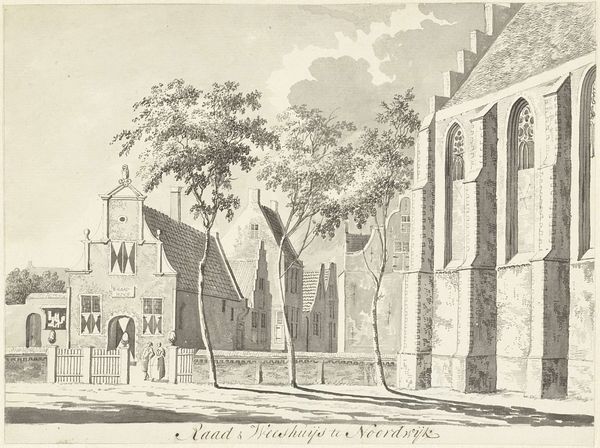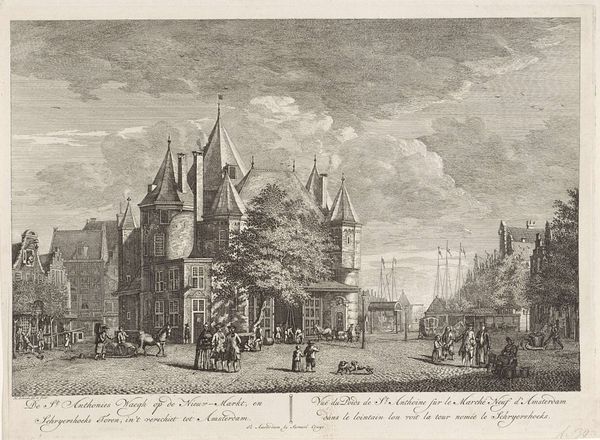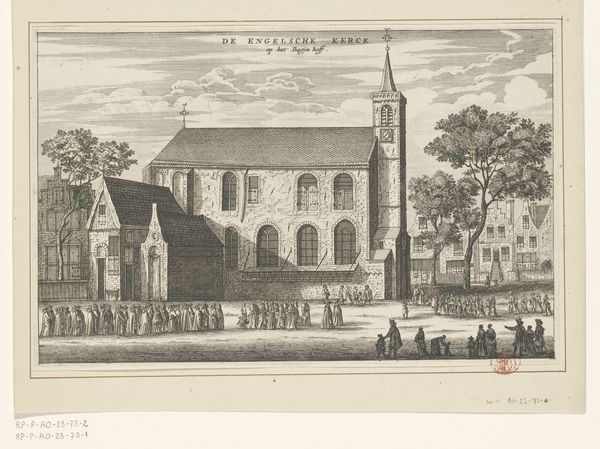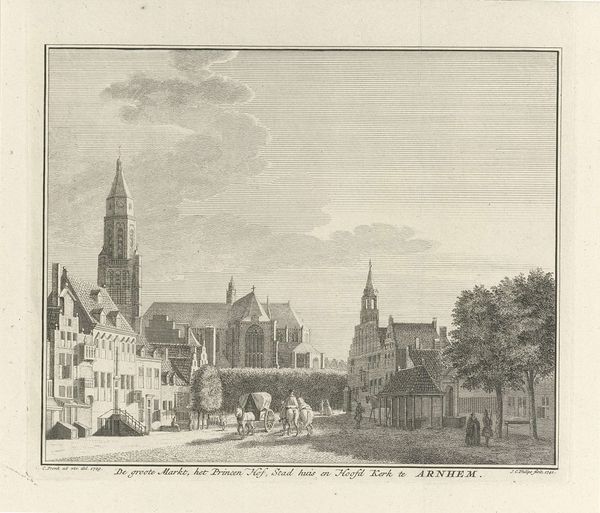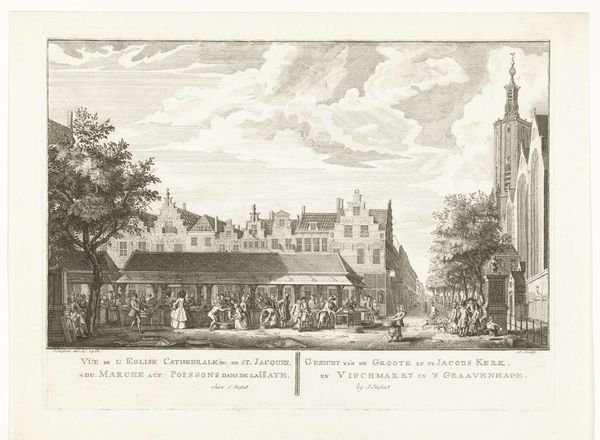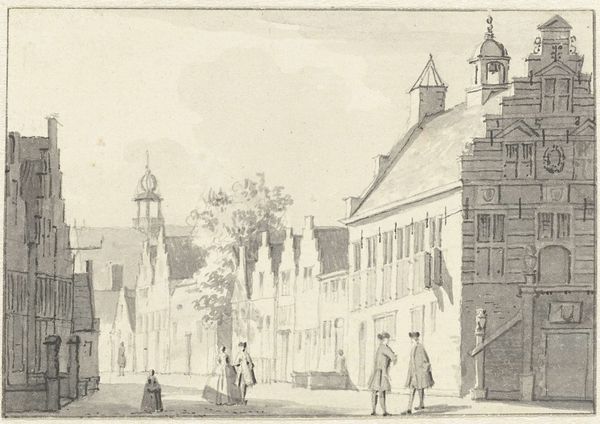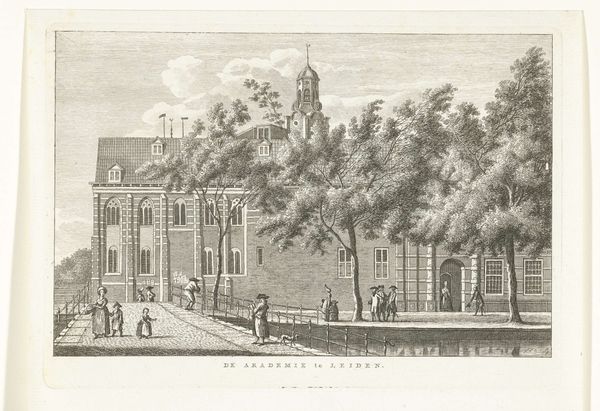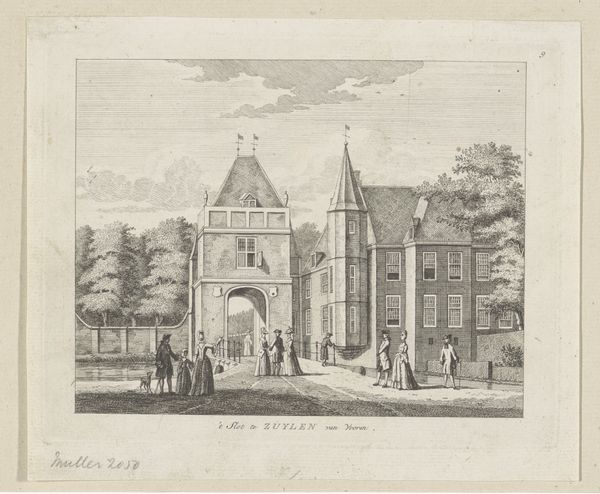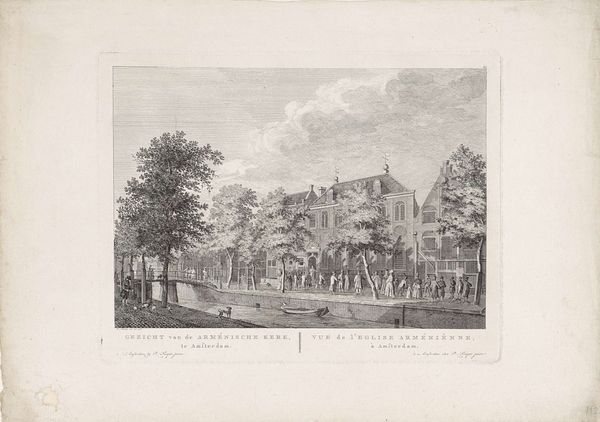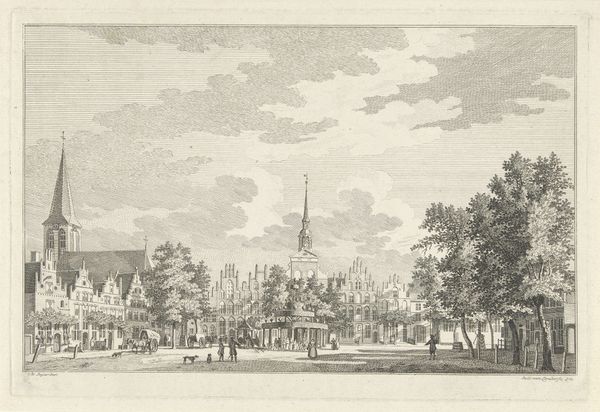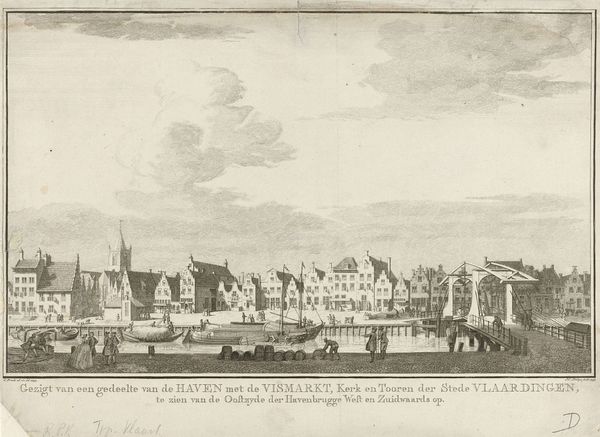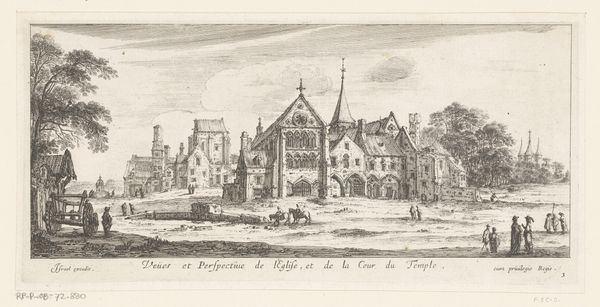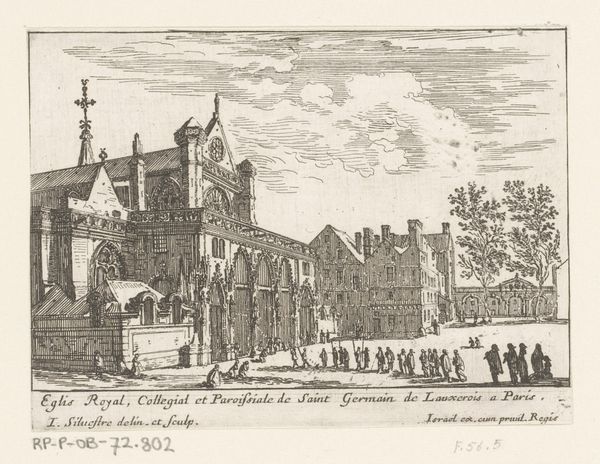
print, etching, engraving, architecture
#
baroque
#
dutch-golden-age
# print
#
etching
#
old engraving style
#
cityscape
#
engraving
#
architecture
Dimensions: height 177 mm, width 244 mm
Copyright: Rijks Museum: Open Domain
Editor: Here we have "Gezicht op het Binnenhof te Den Haag," a cityscape by Jan Caspar Philips from 1745, rendered in etching and engraving. The level of detail is astounding for a print. What aspects of this work stand out to you? Curator: What strikes me is the relationship between the production of this image and its subject, the Binnenhof itself. Etchings and engravings like this were commodities, made to be circulated. They offered a kind of visual ownership, allowing people to "possess" and consume an image of power like the Binnenhof. Editor: That’s interesting! So, you see it as less about artistic expression and more about production and consumption? Curator: Exactly! Think about the labor involved in creating the copper plate, the skill required to transfer the image, the mechanics of the printing press… these details reveal so much about 18th-century Dutch society. This isn't just about Baroque style; it's about the material conditions that made that style possible. Who do you imagine was buying these prints, and what was their purpose in doing so? Editor: Probably wealthy merchants, maybe government officials… almost like a souvenir or a status symbol, right? A way to show their connection to power. Curator: Precisely! And the very act of making the Binnenhof reproducible cheapened its authority while simulatenously distributing that authority among more citizens. So what begins as one statement can inadvertently communicate its opposite. Editor: I never considered the socioeconomic implications of printmaking like that. It definitely adds another layer to appreciate. Thanks! Curator: My pleasure. It all boils down to this constant give and take. Every technique produces its opposite side, so that a status symbol soon after turns into propaganda against.
Comments
No comments
Be the first to comment and join the conversation on the ultimate creative platform.
